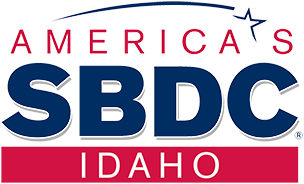The financial analysis and plan should be developed last, after you’ve completed research and planning in marketing and operational areas, and defined objectives, all of which establish the basis for assumptions regarding sales revenue and expense requirements needed for future plans.
Established Businesses
Analysis of past financial performance always precedes forecasting the future. In this section include a financial history and ratio spreadsheet which will allow you to provide important financial information on a single page for ease of comprehension and analysis. You may also include industry information for comparison. Below the spreadsheet, complete the section with a brief analysis summarizing key financial performance trends and results.
In the Appendices, include year-end financial statements (Income Statement, Balance Sheet), and business income tax returns for each year in business for the past three to five years, plus your most recent income statement and balance sheet for the current year. You may also need to include other financial information: accounts receivable aging, accounts payable aging, debt schedule, inventory listing, and equipment listing. Talk with recipients of your business plan to determine requirements.
Established and Startup Businesses
They will be expected to provide forecasted financial information looking forward three to five years. In this section include a financial forecast spreadsheet which will allow you to provide a summary of important forecasted financial information on a single page for ease of comprehension and analysis. Below the spreadsheet include key assumptions relied upon and complete the section with a brief summary analysis of your financial forecast.
Complete this section by providing a summary of financial needs. Identify how much money will be needed and for what purpose, for example: to cover growth and expansion, start-up expenses, fixed asset purchases, or to operate the business. Explain how much of the total funds required will come from owner investment and how much from borrowed funds. If you are proposing to borrow funds, define the general terms you are requesting.
In the Appendices include:
- Startup cost requirements for new businesses or new initiative costs for existing businesses
- Forecasted Cash Flow monthly for the first two years, annually for three to five years
- Forecasted Income Statements monthly for the first two years, annually for three to five years
- Forecasted Balance Sheets annually for each year
- Capital Expenditure plans and budgets annually (if applicable)
Personal Financial Information
Business owners are expected to support their businesses financially with the infusion of resources and capital. In addition, bankers, investors, and landlords, normally expect owners to personally guarantee business loans and lease obligations. As such, the completion of a personal financial statement that includes a detailed Income Statement (sources of income and expenses), and a detailed Balance Sheet (assets and liabilities with descriptions of all items) should be provided for each owner and included in the Appendices.
In this section of the business plan you may provide a brief statement regarding each owner and the capital they have and/or intend to invest in the business. You may also refer the reader directly to the Appendix to review financial statements and provide no statements here, or your may delete this section for readers who will not be provided with this information.





